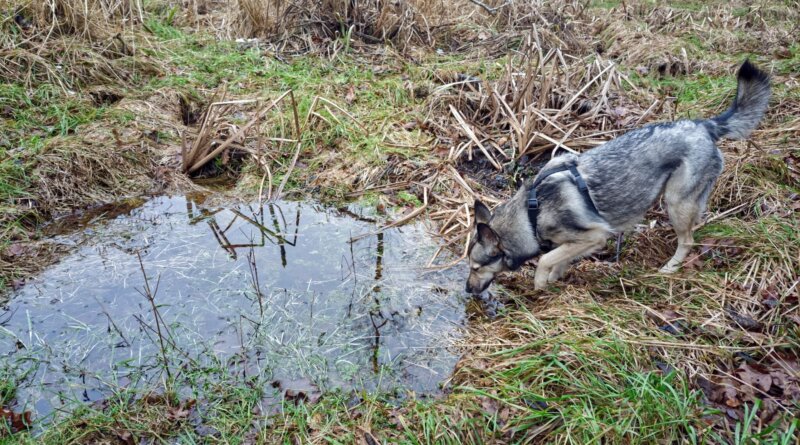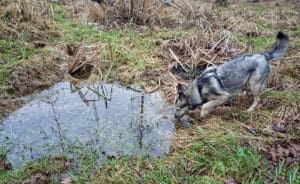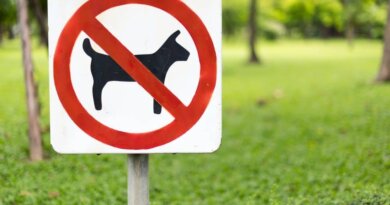Leptospirosis in Dogs – Whole Dog Journal
Leptospirosis is caused by the bacteria Leptospira. Several species of mammals can become ill with leptospirosis, including dogs and humans. Leptospira bacteria are found worldwide. Leptospirosis in dogs can be prevented through proper vaccination. The initial series is two vaccines given three to four weeks apart. After the initial series, the leptospirosis vaccine is administered once a year.
As with any vaccine, your dog may experience lethargy, reduced appetite, and soreness after receiving the leptospirosis vaccine. In rare circumstances, dogs that receive the leptospirosis vaccine may experience a vaccine reaction—also referred to as an allergic reaction. Symptoms of a vaccine reaction include vomiting, diarrhea, facial swelling, hives, and severe coughing or difficulty breathing.
A vaccine reaction can occur in the first few minutes to a few hours after receiving a vaccine. Always seek immediate veterinary care if you think that your dog is experiencing a vaccine reaction.
Can Humans Get Leptospirosis?
Humans can get leptospirosis. According to the Centers for Disease Control (CDC), the most common ways that people contract leptospirosis are:
- Contact with water, soil, or food contaminated with the urine of infected animals
- Contact with urine (or other bodily fluids, except saliva) from infected animals
- Drinking contaminated water
- Exposure to contaminated floodwaters
According to the CDC, transmission of leptospirosis between humans is rare. It is also rare to get leptospirosis from your dog if you practice good hygiene. Do not touch your dog’s urine with your bare hands. Wash your hands after handling items that have had contact with your dog’s urine.
Previous versions of the leptospirosis vaccine for dogs were found to contain high concentrations of bovine serum albumin. This was associated with a higher than usual rate of leptospirosis vaccine reactions in dogs. Recent advancements in vaccine manufacturing have resulted in a leptospirosis vaccine that is no more likely to cause an adverse event than the currently available distemper-adenovirus-parvovirus (DAP) and rabies vaccines.
What is Leptospirosis?
Leptospira is a spirochete bacteria—it is shaped and acts like a corkscrew. Its corkscrew shape and action make the Leptospira bacteria efficient at invading the organs of a dog’s body, such as the kidneys, liver, heart, and lungs.
There are over 250 serovars of the Leptospira bacteria that are known to cause leptospirosis in mammals worldwide. Think of the Leptospira bacteria as ice cream and each serovar as a different ice cream flavor. Ice cream always has the same base—milk, salt, cream, and vanilla extract. But there are hundreds of ice cream flavors, each with their own characteristics and nuances. Each serovar of leptospirosis is like a different flavor of ice cream.
The leptospirosis vaccine provides protection against the four most common serovars known to infect dogs. However, there are ten serovars that are known to cause leptospirosis in dogs in North America. The leptospirosis vaccine for dogs may provide some cross-protective immunity against the other six serovars. But that cross-protectiveness is not complete. It is still possible (but far less likely) for a fully vaccinated dog to become infected with leptospirosis.
How Dogs Get Leptospirosis
Leptospira bacteria are found in the urine of animals infected with leptospirosis, including rodents, wildlife, and other dogs. Soil and water where infected animals urinate will contain high numbers of Leptospira bacteria. Dogs become infected with leptospirosis through contact of their mucus membranes or open wounds with contaminated soil or water (see sidebar for more information).
How Dogs Get Leptospirosis
Dogs can contract leptospirosis through the following activities:
- Swimming in natural bodies of water (such as rivers, lakes, or streams)
- Wading into marshes or standing water
- Walking anywhere outdoors
- Drinking from puddles
- Eating dirt
- Being bitten by or killing infected wildlife or rodents
- Living indoors where a rodent problem exists
- Going to dog parks, doggie daycare, or dog kennels
According to the CDC, transmission of leptospirosis between humans is rare. It is also rare to get leptospirosis from your dog if you practice good hygiene. Do not touch your dog’s urine with your bare hands. Wash your hands after handling items that have had contact with your dog’s urine.
Dogs are at risk of contracting leptospirosis regardless of where they live. Leptospira bacteria are found worldwide and in a variety of environments. Dogs that reside in urban, suburban, and rural areas are all at risk for becoming ill with leptospirosis. Even dogs that only go outside in their fenced-in backyards can contract leptospirosis.
Symptoms of Leptospirosis in Dogs
Dogs with leptospirosis will have a decreased appetite, fever, and low energy level. They will drink more water and urinate more than usual. They may walk with a stiff gait and have difficulty getting comfortable when lying down. Dogs with leptospirosis may also develop a yellowing of the skin or eyes—this is called jaundice.
In some cases, dogs with leptospirosis may develop difficulty breathing, nosebleeds, swollen limbs, or bloody diarrhea or vomit. Leptospirosis can also cause inflammation inside the eyes – this is called uveitis. Signs of uveitis include bloodshot eyes, squinting, or a haze that appears suddenly inside the front of the eyes.
How is Leptospirosis Diagnosed?
There are currently four tests available for aiding in the diagnosis of leptospirosis in dogs. Two of these are point-of-care tests that provide results in about ten minutes. The other two are laboratory tests that take about 2-5 days to return results.
The point-of-care tests detect antibodies to the leptospirosis bacteria in your dog’s blood. There are currently two point-of-care tests available in the United States—the WITNESS Lepto Rapid Test and the SNAP Lepto Test.
The WITNESS Lepto Rapid Test looks for antibodies to the four most common leptospirosis serovars that infect dogs in North America. Although this is an excellent test that can be completed quickly at your dog’s veterinary hospital, there are two potential drawbacks. First, a dog that has recently been vaccinated for leptospirosis may test positive but may not have leptospirosis. Also, if your dog is infected with a serovar other than the four most common serovars, then he will test negative even though he has leptospirosis.
The SNAP Lepto Test looks for antibodies to a protein that is expressed on the surface of every Leptospira bacteria, regardless of serovar. As with the WITNESS test, there are two potential drawbacks. One is that a dog that has been vaccinated for leptospirosis within the past year may test positive on this test but may not have leptospirosis. The second is that a dog that has leptospirosis may test negative if he has been infected for less than seven days.
These two point-of-care tests have their place in a clinical setting despite their drawbacks. Test results must be interpreted in conjunction with your dog’s symptoms and other laboratory findings. Your veterinarian will likely recommend additional blood work—including a complete blood count, chemistry panel, and coagulation profile – as well as urinalysis and radiographs (x-rays) of his chest and abdomen.
If your dog’s symptoms and preliminary lab results are consistent with signs of leptospirosis, your veterinarian will recommend confirmatory tests for leptospirosis. These tests will take anywhere from two to five days to complete at a laboratory. Your veterinarian will likely begin treatment for leptospirosis while waiting for these results.
There are two confirmatory tests for leptospirosis that are completed at laboratories outside of the veterinary hospital. These include the microscopic agglutination test (MAT) and the nucleic acid amplification test (NAAT), sometimes known as a PCR test.
The MAT looks for antibodies to five to seven different leptospirosis serovars. Instead of a positive/negative result, the MAT returns a titer for each serovar. A dog that has been vaccinated for leptospirosis may show a positive titer for the serovars included in the vaccine. Positive serovar titers for previous vaccination tend to be low while serovar titers for infection tend to be high.
If the MAT is submitted early in the course of disease, then the titer of the serovar responsible for the infection may be low. If your dog meets all of the other clinical criteria for leptospirosis and responds to treatment, your veterinarian may recommend repeating the MAT two weeks after he has recovered from his illness. If there is a significant rise in any of your dog’s serovar titers, then this confirms the diagnosis of leptospirosis.
The NAAT looks for DNA that is specific for and common to all serovars of leptospirosis. Both blood and urine samples are submitted to the laboratory for this test. Dogs that have leptospirosis are more likely to have a positive blood test within the first week of illness. After the first week of illness, the urine test is more likely to be positive than the blood test.
Dogs that have been exposed to the Leptospira bacteria but do not have leptospirosis may have a positive result on the urine NAAT. These dogs are called subclinical carriers of leptospirosis. Leptospira bacteria are not continuously shed in the urine of infected dogs, so some dogs with leptospirosis may have a negative result on the urine NAAT.
There are two other tests that may be used to determine if a dog has leptospirosis. Darkfield microscopy or bacterial culture can be used to look for the Leptospira bacteria. These tests are difficult to execute, can take a long time to complete, and are only available at specialized laboratories. A positive darkfield microscopy test is supportive of a diagnosis of leptospirosis and a positive culture test confirms that a dog has leptospirosis. However, these tests are often not used because of their limitations.
So, what does all of this mean? In reality, there is no one straightforward and immediate way to diagnose leptospirosis in dogs. To address this problem, the American College of Veterinary Internal Medicine (ACVIM) formulated a list of diagnostic criteria to help veterinarians determine if a dog should be suspected to have leptospirosis.
If your dog is suspected to have leptospirosis, treatment should begin immediately pending the results of confirmatory tests. Treatment should be continued unless it is determined that your dog does not have leptospirosis. Test results that confirm a diagnosis of suspected leptospirosis include:
- A significant increase in the titer for a Leptospira serovar between the first MAT and the MAT completed once a dog has recovered from illness
- A positive NAAT on a blood sample (not a urine sample)
- A positive leptospirosis culture test
Treatment of Leptospirosis
If your dog is suspected to have leptospirosis, your veterinarian will recommend hospitalizing your dog for treatment. Your dog will initially receive an injectable antibiotic and then be transitioned to oral doxycycline once he is eating again.
Dogs with leptospirosis may have one or more of the following syndromes associated with their illness:
- Acute kidney injury (AKI)
- Cholangiohepatitis (inflammation of the liver and gallbladder)
- Leptospiral pulmonary hemorrhage syndrome (bleeding into the lungs)
- Bleeding disorder
- Uveitis (inflammation of the inner lining of the eyes)
- Pancreatitis (inflammation of the pancreas)
- Enteritis (inflammation of the intestines)
- Myocarditis (inflammation of the heart)
Treatment for leptospirosis in dogs includes providing support to the organs negatively impacted by the infection. This may include intravenous fluid therapy, blood product transfusions, vitamin and electrolyte supplementation, and medications to protect and support the gastrointestinal tract and liver.
The prognosis for recovery is good for dogs that have mild illness and only one syndrome associated with leptospirosis. The prognosis worsens with the number of syndromes present or for dogs that experience acute kidney failure.
The Leptospirosis Vaccine for Dogs
The most effective way to minimize the risk of contracting leptospirosis is by giving the leptospirosis vaccine. The currently available vaccines are more than 80% effective at preventing leptospirosis in a research setting. It is reportedly rare to diagnose leptospirosis in dogs that have received the lepto vaccine series and the annual boosters.
It is difficult to prevent potential exposure to leptospirosis given the ubiquitous nature of Leptospira bacteria. Some activities may put dogs at greater risk of contracting leptospirosis. The following can help minimize your dog’s leptospirosis risk:
- Restrict or eliminate access to marshes and standing water
- Limit coprophagy (eating other animal’s feces) and eating dirt
- Prevent drinking water from puddles
- Control rodent populations on your property
- Minimize exposure to wildlife
Dogs can recover from leptospirosis if the disease is recognized early and treated aggressively. But the best prognosis comes with never getting leptospirosis in the first place. Talk to your veterinarian about vaccinating your dog for leptospirosis and other preventative measures you can put in place to protect your dog.





